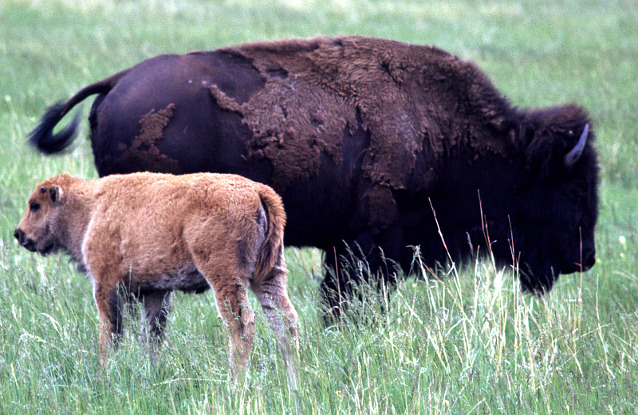
NPS photo
Learn the facts about bison, named America's national mammal in 2016.
- Class: Mammalia
- Order: Artiodactyla (same as deer, sheep, pronghorn)
- Family: Bovidae (true horns, not branched, on both sexes, cattle, sheep, goat, musk ox)
- Genus: Bison
- Species: bison
- Subspecies: athabascae (woods); bison (plains)
- Name/History: In the late 1800s, bison almost became extinct. They were saved by the American Bison Society. Often called buffalo by early scientists who thought they were related to the Africa/Asian water buffaloes. French explorers also called the animals "les boeff"—the cattle.
- Weight/Height: Male - 2000 lbs, 5.5–6 ft; Female - 1000 lbs, 4.5–5.5 ft; Calf - 30–70 lbs, 2.5 ft
- Rut: June–September (one bull forms a temporary "tending bond" with one cow at a time)
- Gestation: 9.5 months
- Birth: April–June (reddish, brown fur, no conspicuous hump)
- Number of young: Usually 1
- Age: 12–15 years
- Habitat/Range: At one time, bison roamed North America from Alaska to northern Mexico and western California to western New York.
- Food: Grasses, browse
- Predators: Occasionally grizzly, humans, extinct prairie wolf
- Disease: Brucellosis, tuberculosis
- Communication: Grunts/snorts between cow-calf, roar by bulls during rut
- Behavior/Characteristics: Generally cow/calves in herd together, bulls alone or in small bull herd except during the rut
Last updated: December 29, 2016
